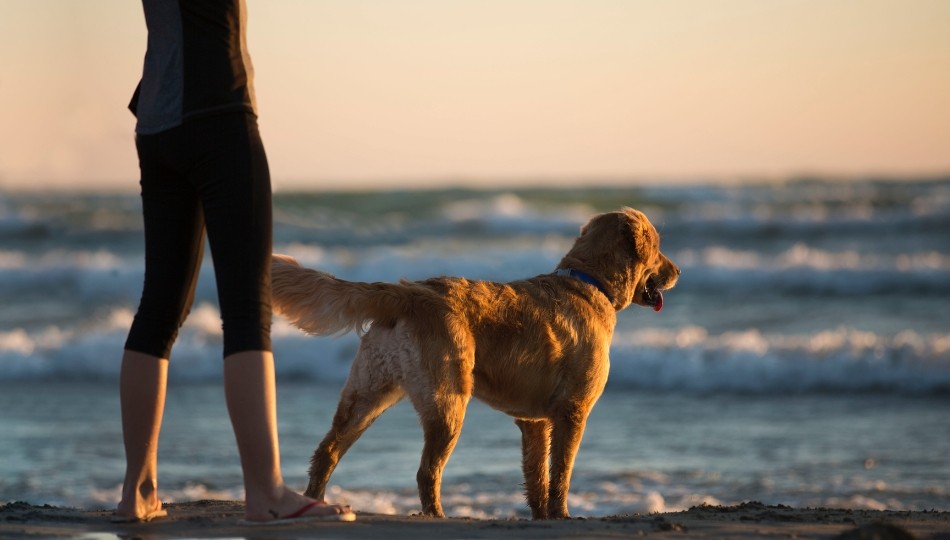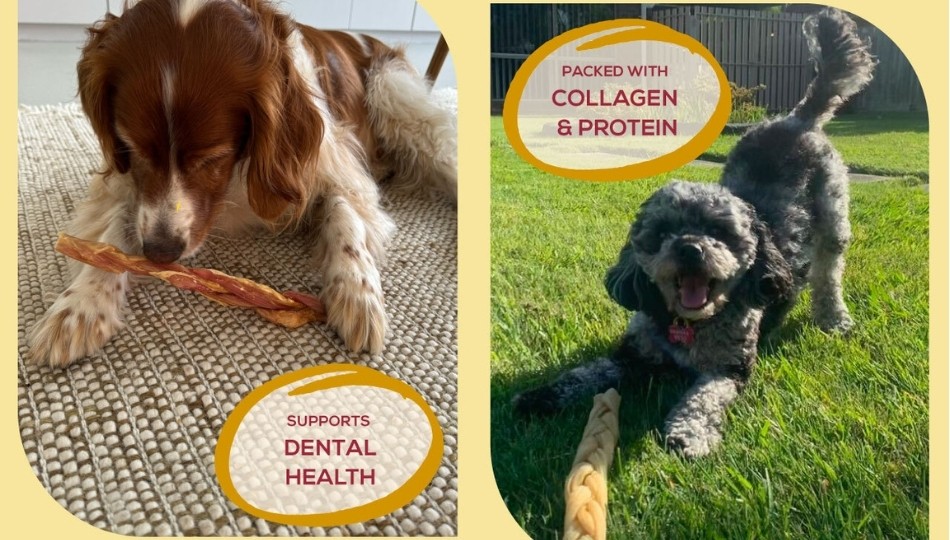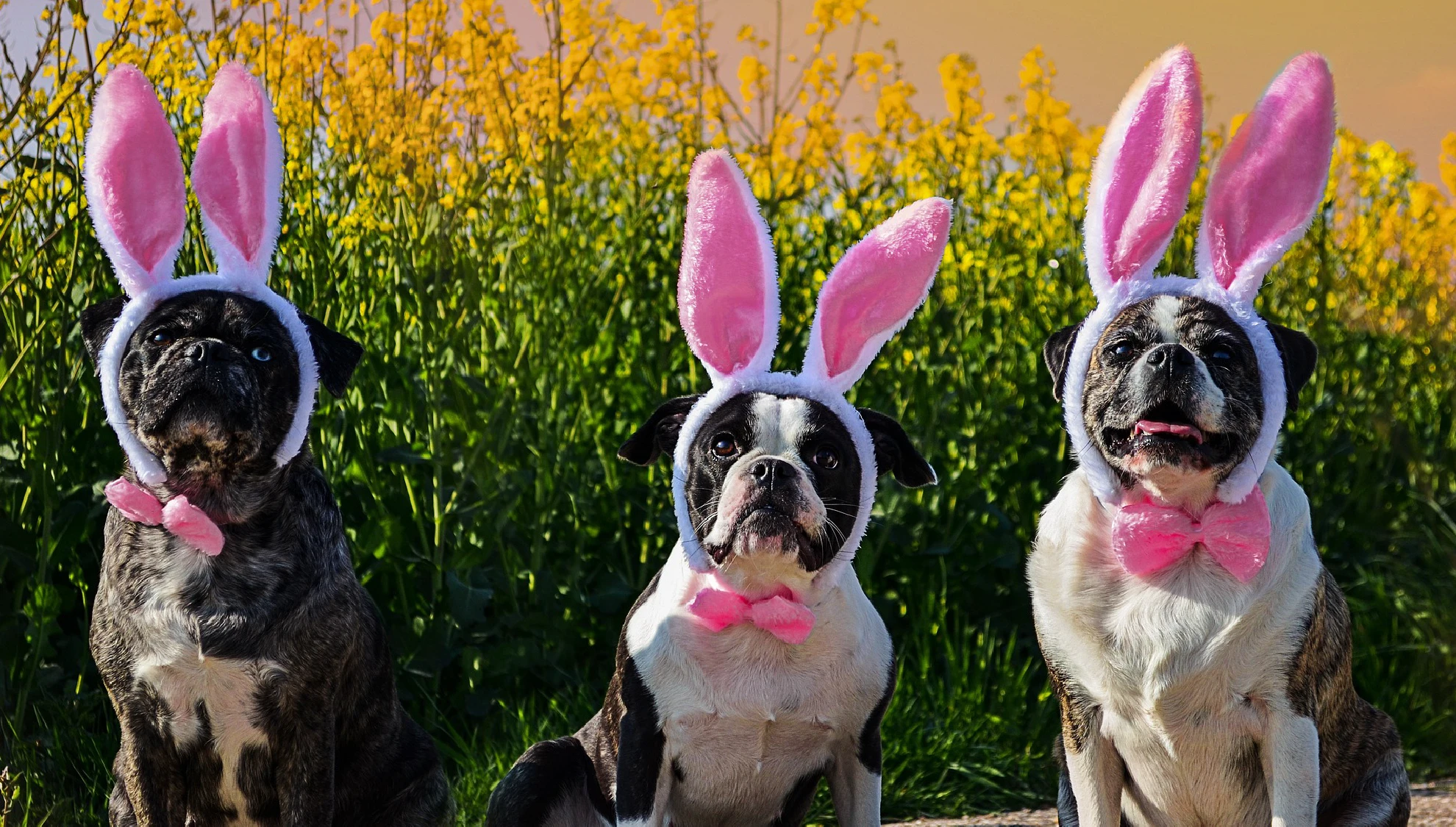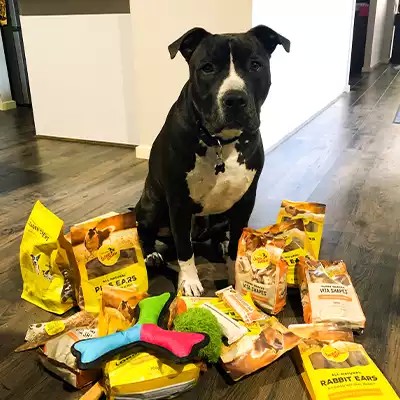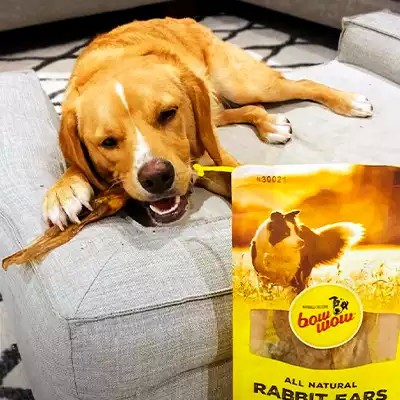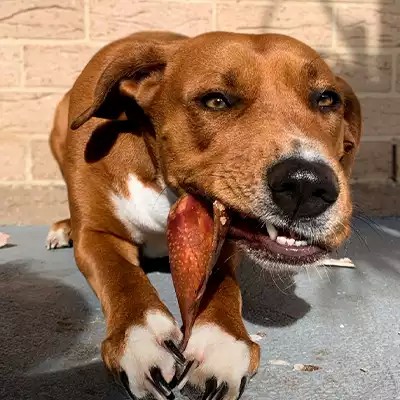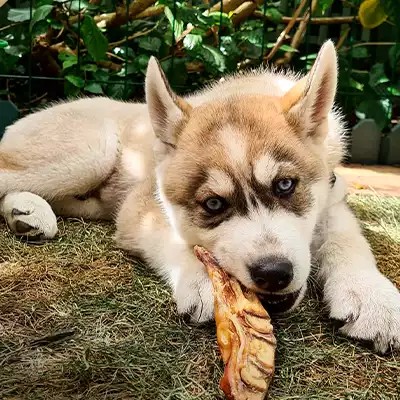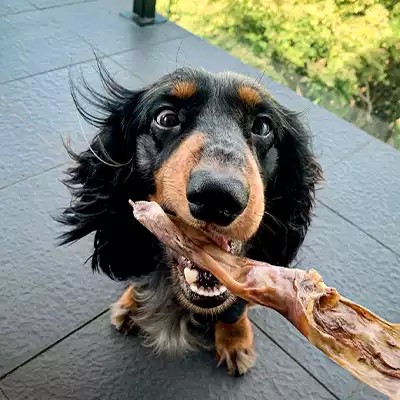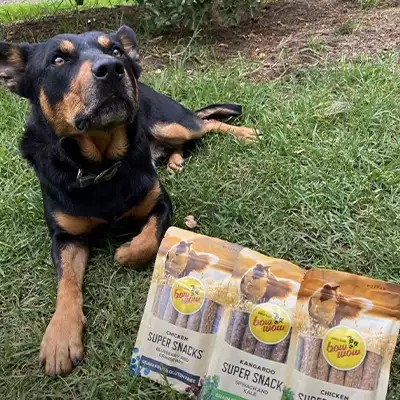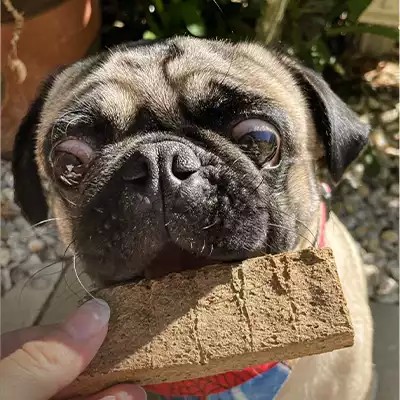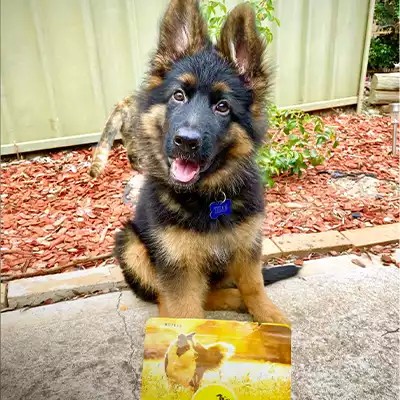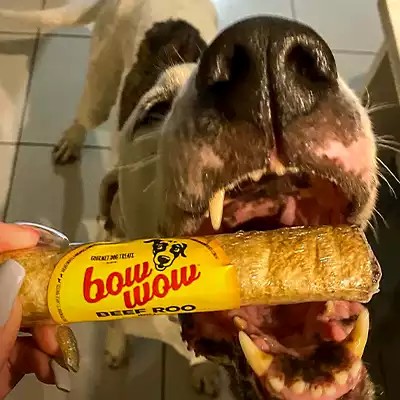News >
Dogs With Jobs: Autism Assistance Dogs
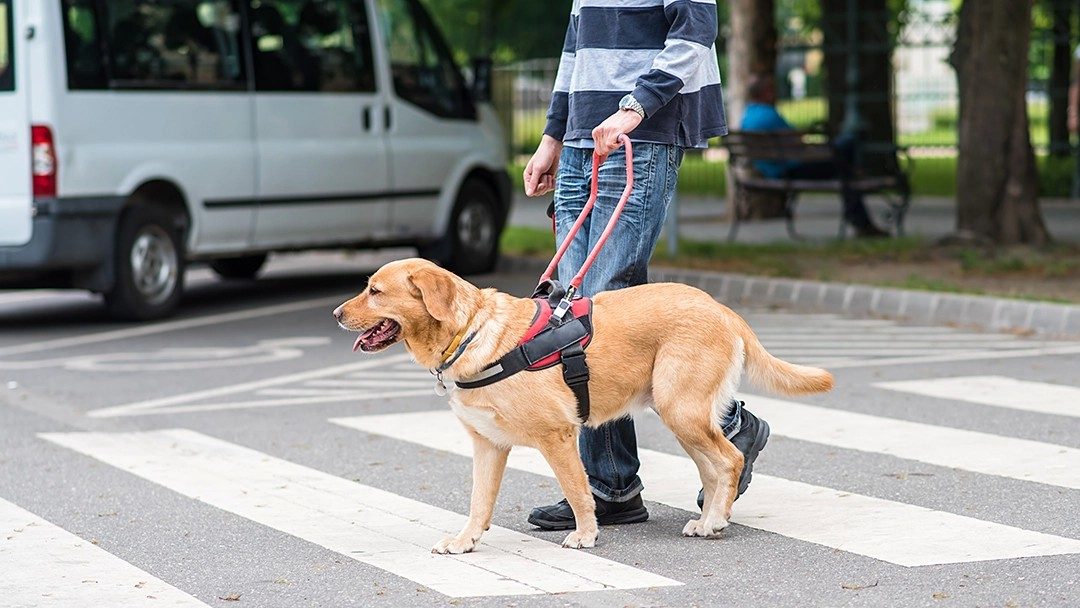
As dog lovers, we know the bond we share with our four-legged companions is special. Not only do they show us unconditional love and affection whenever we come home, but there are always licks to spare whenever we’re feeling down.
But some dogs go above and beyond the call of duty for their companions. Autism assistance dogs have an incredible temperament and the specialised training to enrich the lives of those who need it most.
And the bond between an assistance dog and its human can only be described as an intense, affectionate relationship defined by love, trust, and interdependence.
For children and families living with autism, autism assistance dogs provide both physical and emotional support. These incredible dogs are
trained to assist with a child’s development, helping develop communication skills, empathy and helping calm a child through difficult
times.
So, how does a pup become an Autism Assistance Dog?
All future autism assistance puppies are born through the Guide Dogs specialist breeding program, with each litter named together in an alphabetical group (resulting in some truly adorable graduation ceremonies!)
For the first 12-18 months of their lives, the pups live with specialist puppy raisers who care for them and teach them the training basics. After they’ve mastered the training basics, they then get to meet expert trainers from the Guide Dog Centre, who assess them for two weeks, looking for the traits that make them suitable to become an autism assistance dog.
To learn more about these incredible dogs and the skills they need to possess to become an assistance dog, we’ve been lucky enough to chat with Leigh Saunders, an autism assistance and facility dog trainer at Guide Dogs SA/NT.
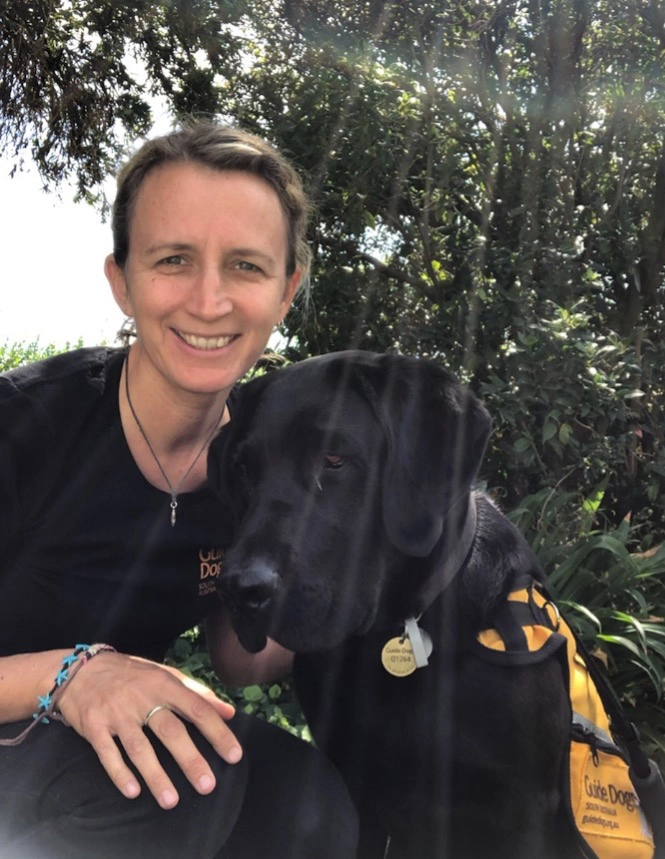 Leigh Saunders from Guide Dogs SA/NT with Autism Assistance Dog, Vinn.
Leigh Saunders from Guide Dogs SA/NT with Autism Assistance Dog, Vinn.BW: How old are the puppies when they start their training with you?
LS: “I normally get them when they leave the puppy raisers, so anything from about twelve months to
eighteen months approximately.”
BW: So, how long does it take to train a pup to become an assistance dog?
LS: “Around twenty weeks, so about five months.”
BW: And how many pups do you have at once?
LS: “Normally, we get a group of four to six at one time, and then that’s our job for the next five months.”
BW: How do you know if a puppy has the superpowers required to be an autism assistance dog?
LS: “The puppies have to reach certain standards throughout their puppy raising; then, as trainers, we assess them
before we accept them for further training. A confident, driven dog that wants to get out and walk a lot, they’re the ones who go to guides.
If there’s a dog that isn’t quite as confident and doesn’t want to get out and do the guide work, they’re usually more suitable for the
programs I run. If it’s not suitable for one of my programs - (there are a variety of reasons they may not be suitable, such as barking,
suspicion, and high distraction levels) - they go on to be pets. We don’t get many of those traits, mainly as Guide Dogs breed all their own
pups, as well as the intensive puppy training.”
BW: What sort of work is involved in the training?
LS: “They get two walks a day and training sessions in between. A lot of one-on-one training is required. We use
clicker training to build on the skills required as an autism assistance dog and teach the young dog how to behave around children. The dogs
also have to get used to walking in a straight line, stopping at kerbs, avoiding obstacles, having someone holding the handle on their
jacket and laying down if the child tries to run away. Play is also a big part that will help develop the child’s motor skills and bond with
the dog.”
BW: So when they’re finished training, how do you find the perfect home for the dogs?
LS: “When our dogs get to a certain stage in training, and we feel they’re ready to take on their role, we start
looking for their forever home. To find the perfect fit for an autism assistance dog, I’m looking for a love triangle between the dog, the
child, and the handler. It is quite a complicated process, and it is important we get this match right so that the dog, handler and child
can all work confidently and safely together. But sometimes you go out to meet the family, carry out the assessment process and the dog kind
of goes, ‘Hmm, I like this house, I think I want to stay here’. That’s obviously not all you base it on, but you get that feeling
from the dog.”
So, what sort of a bond forms between a trainer and a pup-in-training?
Well, the trainers at Guide Dogs are all extremely professional, so their primary concern is pairing a well-trained dog with a person in
need, but they can’t help but come to love the dogs they train. The trainers see many dogs pass through their care, but they view every pup
as a little hero off to save the world. And the dogs seem to look back on their time in training fondly!
BW: How would you describe the emotional bond you form with the dogs?
LS: “Dogs and trainers form a very close bond. The dogs get to know our cars as well as our footsteps and our smell.
It’s not like having a pet dog, though, you have a goal, and you’re aiming for something at the end of it. I’m a trainer who takes my dogs
home; I do a lot of dog training at home with them, such as teaching them to ignore food thrown or dropped near them and good social
behaviour. Because you’re working towards something, it’s very different to a pet dog. You still form that strong bond; every dog has its
strengths and weaknesses, like people, and as hard as you try, you sometimes still have your favourites.”
BW: So, would all of the dogs you’ve trained still recognise you?
LS: “You do form a life-long bond with some of your dogs. I used to work in England, and I’d see dogs five, six,
seven years down the line, and they’d still go ‘yep! I know you!’”
BW: How does it feel when a dog graduates and begins to work with people in need?
LS: “It makes it all worthwhile to see the client really happy, safe, having that mobility, and getting out and
about into the community. You’ve done your job well when the dog and the client are really happy and are working well together.”
BW: What’s the best part of being a trainer?
LS: “I love my dog training, I love my clients, and I love seeing the end result. When you find that forever home
for your dog and you know that child, or person, is going to have a better life with the help of you and the dog, that’s one of the best
bits.”
Billy and Ringer.
When asked about dogs that she’s particularly proud of, Leigh told us about her recent trainee Ringer, and Billy, a young man with autism.
LS: “Billy had an autism assistance dog with us that retired aged 11. For most children, the end result is to be walking independently by the time their dog retires. But with Billy’s condition, he will never be totally independent; but he is too old for our autism assistance dog program. So I trained an assistance dog for him to help build his independence. When you look at him, it’s pretty amazing that Billy can now walk ahead confidently with his new dog Ringer, whilst remaining safe on the pavement, stopping at kerbs, with mum on a long lead behind them, keeping a watchful eye.”
Of course, we couldn’t let Leigh go without asking for her expert dog raising tips!
BW: What expert tips do you have for anyone training their own pups?
LS: “Positive reinforcement training. So basically, when you’re teaching your dog, everything they do well is rewarded. And clicker training is brilliant. Invest in a clicker and learn how to use it. Reward the good, ignore the bad. They’re the two biggest things.”
Bow Wow Dog Treats would like to thank Guide Dogs SA/NT, especially Leigh, for chatting with us.
